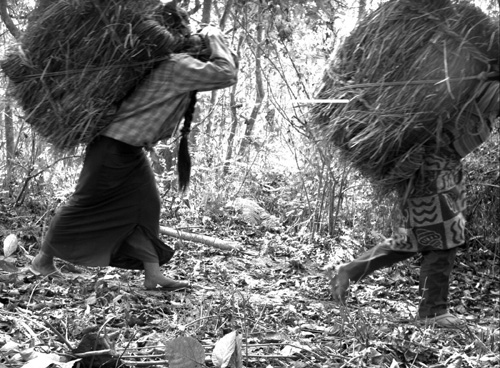EAST LANSING, Mich. – Tigers aren’t known for being accommodating, but a new study in the Proceedings of the National Academy of Sciences indicates that the carnivores in Nepal are taking the night shift to better coexist with humans.
The revelation that tigers and people are sharing exactly the same space – the same roads and trails – of Chitwan National Park flies in the face of long-held convictions in conservation circles. It also underscores how successful conservation efforts need sciences that takes into account both nature and humans.
“As our planet becomes more crowded, we need to find creative solutions that consider both human and natural systems,” said Jianguo “Jack” Liu, the director of the Center for Systems Integration and Sustainability at Michigan State University. “Sustainability can be achieved if we have a good understanding of the complicated connections between both worlds. We’ve found something very interesting is happening in Nepal that holds promise for both humans and nature to thrive.”
Conventional conservation wisdom is that tigers need plenty of people-free space, which often leads to people being relocated or their access to resources compromised to make way for tigers.
Neil Carter, MSU doctoral student and one of the paper’s co-authors, spent two seasons setting motion-detecting camera traps. His analysis of the images shows that people and tigers are walking the same paths, albeit at different times.
Tigers typically move around at all times of the day and night, monitoring their territory, mating and hunting. But in the study area, the tigers had become creatures of the night. People in Nepal generally avoid the forests at night. Essentially, quitting time for people signals starting time for Chitwan’s tigers.
“It’s a very fundamental conflict over resources,” Carter said. “Tigers need resources, people need the same resources. If we operate under the traditional wisdom that tigers only can survive with space dedicated solely for them, there would always be conflict. If your priority is people, tigers lose out. If your priority is tigers, people lose out.”
In Chitwan, tigers seem to be adapting to make it work, he added.
“There appears to be a middle ground where you might actually be able to protect the species at high densities and give people access to forest goods they need to live,” Carter said. “If that’s the case, then this can happen in other places, and the future of tigers is much brighter than it would be otherwise.”
Additional co-authors of the paper include Binoj Shresthaof the Institute for Social and Environmental Research in Nepal, Jhamak Karkiof Nepal’s Department of National Parks and Wildlife Conservation and Narendra Man Babu Pradhan of the World Wildlife Fund in Nepal.
The research was funded by the National Science Foundation, NASA, the U.S. Fish and Wildlife Service Rhinoceros and Tiger Conservation Fund and MSU AgBioReseach. It was part of the Partnership for International Research and Education.
*Source: Michigan State University


